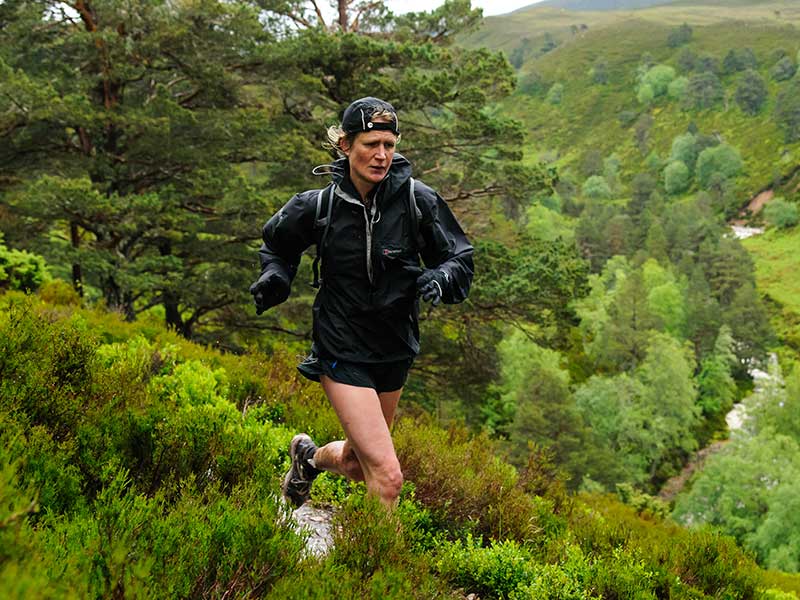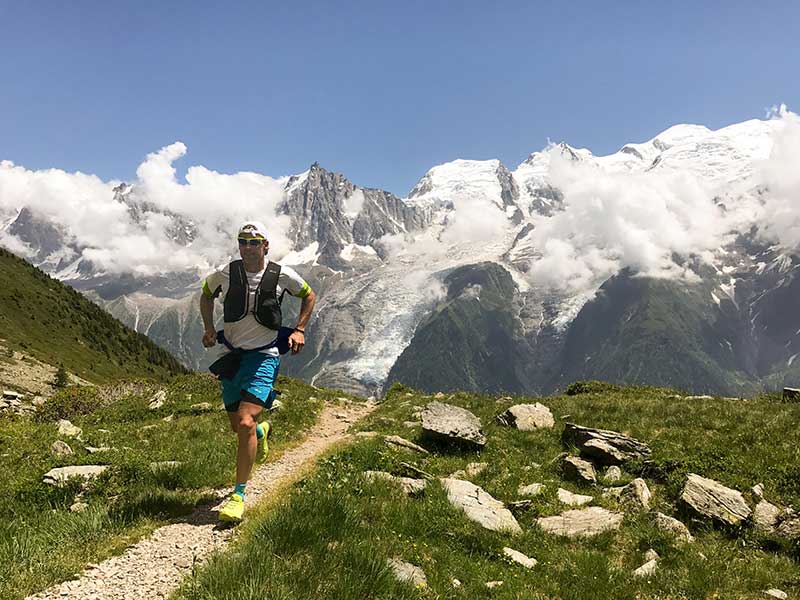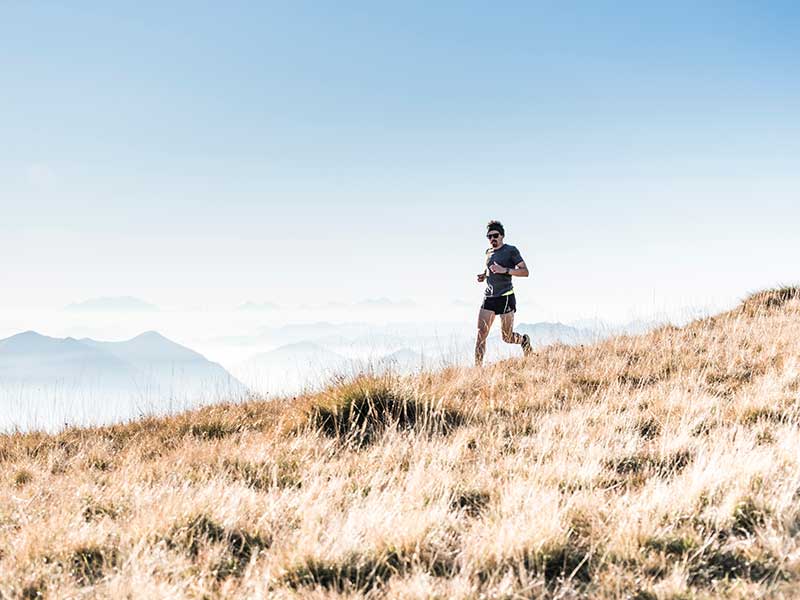Running technique in trail running

From the point of view of physiotherapy, all running techniques in trail running is specifically designed with two clear and marked main objectives in mind:
- to provide the work of the corridor with a high rate of return and thus optimise their movement, making them more efficient and effective, so that energy expenditure will be lower and fatigue will appear later.
- preventing injuries through the reduction of the forces produced by the impact.
- more confidence, fluency and coordination, and ultimately, greater enjoyment of the activity.
What does performance mean in this context? Quite simply, it refers to the amount of energy needed to run. A correct running technique in trail running will help to have a more efficient movement from a biomechanical point of viewThe "gesture" that allows a runner to advance the greatest distance, making the least possible effort and maintaining this effort for a prolonged period of time.
To help you to have an effective running technique, this article will introduce you to what characterises an ineffective running technique and what characterises an effective running technique.
At a glance:
- Effective technical elements.
- Exercises: flat, uphill and downhill.
- Barefoot running technique (minimalist shoes)
Elements to consider for an effective and safe running technique in trail running
A safe running technique is any mode of action that allows the runner to avoid any type of injury. For the formulation and identification of safe techniques, physiotherapy experts base themselves on two basic and necessary criteria:
- the impact force must have a reduced speed reduction
- the improved stability of the lower quadrant (feet and legs)
The balance we are able to develop plays a fundamental role in maintaining the stability of the lower quadrant.Therefore, one of the strategies that runners use is to perform conditioning exercises, both uphill and downhill, which will strengthen the athlete's physical endurance.

A safe running technique, whereby the speed of the impact force is reduced, will automatically be a more efficient technique. The reason is simple: the runner will not use as much energy to move through the race.
Ineffective career techniques: what are they and under what characteristics can they be identified?
The energy consumption is one of the most decisive factors in qualifying a running technique. A running technique will be completely ineffective when its implementation requires a high amount of body energy, which implies a direct decrease in the distance covered and the running time.
An ineffective technique is identified by a stride that is too long, far away from the centre of gravityWhy is this relevant? Because, even if his intention is to accelerate, the runner will move forward by continuously cutting the inertia that propels him forward. Consequently, the runner will have to make a great effort to propel himself forward again.
One more thing to note about these running techniques is their high velocity at impact force (VLR)This has a consistent impact on the runner's bone structure and can cause injury. If there is also a noticeable vertical displacement, the running cadence will be reduced.
By following such a technique, the run will look more like a progression of successive jumps than a system of efficient and cohesive steps.
How to identify effective running technique? Factors for injury prevention
A running technique in trail running will be classified by every physiotherapist as a effective when the level of energy to be used is minimum and low in relation to the established average.
There are several reasons that make this scale of performance possible. On the one hand, the greater energy load is saved by establishing a point of contact with the ground that is very close to the athlete's centre of gravity. In a nutshell, the heel shall impact the ground just below the body's centre of gravity.
Something else that happens, by having a running technique in trail running effective, is that it is reduces the velocity of the impact forceThe feet and joints of the runner are less vulnerable to injury.
In the same way, the contact time with the ground will be much shorter.The runner will be able to use the inertia he/she already has to keep pushing forward. If the technique also reduces vertical displacementIn this case, the runner's trajectory will be more linear and optimal, because in order to move the runner will have to expend much less energy.
To close this section, effective running technique helps to increase walking pace. The athlete can choose the one he/she feels most comfortable with, but it is possible to reach a cadence of approximately 180 steps per minute.
Running Technique Exercises in Trail Running (flat, uphill and downhill)
Technique in Trail Running is fundamental to improve running economy, reduce injuries, increase strength and improve our times. We are going to present some exercises to improve it. Remember to assess whether these exercises are suitable for you according to your physical condition, as they could be harmful.
The technique we will need in the mountains has nothing to do with that of asphalt. The ideal is to train in the mountains, but this is not always possible.
We have taken as a basis the approach taken by Sergio Sanchez in the following video, which we believe to be very complete, and which presents some variants that we believe to be appropriate.
Running technique: Flat
- Exercise 1: Heels to buttock. The first exercise proposed by Sergio is a classic. He advises us to avoid leaving our feet dead. The swing should be synchronised, and above all we should try to achieve a natural movement.
- Exercise 2: Stride. We throw one leg forward and the back leg is completely straight. It is important that in the lower body, the three joints, hip, knee at hip flexion and ankle activated with tension, are kept in a good position. The evolution of this exercise will be the single leg jumps.
- Exercise 3: One-legged jumps. What matters is the supporting leg. We jump and land on the same leg alternately.
We now propose several skipping exercises. The execution of these exercises is very important. Remember: back straight, look straight ahead, elbow at 90 degrees, fists clenched, and the swing so that your fingertips touch your hips.
- Exercise 4: Skipping. Trunk upright, energetic swing and raise your knees as high as possible, bringing your heels to your buttocks. This exercise is a classic.
We will now introduce variations of this exercise, with the aim of activating and achieving stability in different parts and muscles of the body.
- Exercise 5: Skipping 1 leg. We raise the knee on one side, while the other knee naturally accompanies the movement.
- Exercise 6: Skipping 1 lateral leg. Same as the previous exercise but moving sideways. You can perform the exercise using hurdles.
- Exercise 7: Skipping every three steps. A more complex variation of the one-legged skipping in which both legs are alternated every three steps.
- Exercise 8: Skipping every three steps with rebound. We simply add a fourth movement in which we remain static by raising the knee and bouncing the foot. The bounce improves the reactivity of the ankle.
- Exercise 9: Skipping slow. A slow motion Skipping recommended to improve arm and leg coordination.
Now an exercise to boost the impulsion.
- Exercise 10: Triple seconds. We focus on the propulsion phase, strengthening our hip extension and flexion. We will make special mention of the ankle impulsion, without forgetting the flight of the free leg. By raising the knee we are forcing the opposite leg to perform the entire ankle drive to the end.
- Exercise 11: Russian steps. Similar to skipping but with the knees fully straight. It is very important to lock your knees, letting your ankles and hips do all the pushing. Always land on your toes and try to keep your back vertical and coordinate your legs with your arms.
- Exercise 12: Lateral running. It is not a specific exercise, but it will help you to improve your ankle and hip stability, at the same time as we work on the coordination of the legs and arms and their mobility. We also improve the power of our stride and work different muscle groups.
- Exercise 13: Running backwards. A great forgotten exercise to finish the exercises on the flat. We run backwards for a few metres, bending our knees, always entering with the forefoot and coordinating the movement with our arms.
Running technique: Climbing
The main thing to do when running uphill is to stay on the ground and use your forward momentum. Tilt your centre of gravity forward.
- Exercise 14: Extending the stride (walking). We will practice it on a steeper climb. It is also a specific strength workout. We can rest our hands on the quadriceps to guide and encourage the movement.
- Exercise 15: Shorten stride (walking). Now we reduce the amplitude and increase the frequency. This should be done at times when the slope increases. It favours a movement that consumes less energy, above a certain slope.
- Exercise 16: Maximum frequency (running). Short strides and a lot of speed of movement. Think that we are doing exercises that we will apply each one depending on the slope that we find and our state at that moment.
- Exercise 17: Exaggerate braking. Propel yourself with your arms, keeping in mind that your arms also propel you during the race. Feel the inertia of your arms to facilitate the ascent. The movement should be natural, so that you look loose.
As a general rule, you should keep your foot under your centre of gravity. Do not lean too far forward. And, as we mentioned in one of the exercises, use your arms in a natural way, let them go loose, taking advantage of their inertia. Try to keep the gastrocnemius and soleus active, it will be more effective and less harmful.
When the slope becomes very steep and you see that you are using up a lot of energy, it is time to walk. You can rest your hands on your quadriceps.
Running technique: Descents
First of all, enjoy and lose your fear. On descents, you tend to lower your centre of gravity. Balance will be maintained with your arms. Use short, quick steps. And when working on your running technique, avoid heeling to reduce the impact.
- Exercise 18: Crossed arms. Exaggerate the cross position of the arms to improve stability. We must become familiar with this position until the movements and how they accompany it become totally natural.
- Exercise 19: Maximum frequency. We will crush the technical descents by increasing the frequency of our footfalls. This will be a star exercise, a way of moving by controlling the movement according to the terrain.
- Exercise 20: Changing paths. You can look for more difficult ones if you feel comfortable. After all, practice will make you better at it. trail runnerso innovate on the descents. It will also make them more fun.
Running technique: Plyometrics.
These are very specific strength exercises for trail and almost all sports due to muscle activation. Exercises in which we seek high intensity with the aim of improving strength, speed and explosiveness.
- Exercise 21: Countermovement jump (CMJ). We start with a series of multi jumps, performing them at maximum intensity and stopping before fatigue sets in. Flexion-extension of the hips and knees at the highest possible speed to reach the greatest possible height. The knee at the moment of maximum flexion will be at 90 degrees. This is a very common exercise in many sports in addition to the running y trail runningThe use of a high level of vitamin C, enhances the muscle contraction that occurs in these activities.
- Exercise 22: Jumping lunges (jumping jacks). Much more intense but we will achieve a greater activation of muscles such as the gluteus, gluteus medius or psoasiliac muscles.
- Exercise 23: Drop jump. Very effective exercise to work on reactivity in the lower body in general. Be careful as the impact makes this exercise quite damaging to the joints.
- Exercise 24: Climbing with joined feet. Jumping to stone with feet together. A very specific exercise. We help ourselves with the impulse of the arms. Be careful not to slip.
- Exercise 25: Lifts from the stride. Its single-leg variant. Much more intense and trail specific. This exercise is very good for finding imbalances between one leg and the other, due to lack of strength, proprioception or overload on the other side. Gastrocnemius and soleus activation by raising the ankle.
- Exercise 26: Ankle bounces from height. An exercise focused on improving the reactivity of the ankle, something that will lead us to perform better.
Learn to run as if you were barefoot
To understand the essential differences between the two running techniques, what is currently understood as an effective running technique is found in runners who usually run barefoot.
When running barefoot, the runner may experience pain if he/she comes into contact with the ground using the heel; the contact is a bit violent. The only way for the runner to reduce the impact on the foot and not to feel pain is to support first the metatarsal and then the heel.

However, the inefficient running technique described above, in which the runner moves forward with the foot away from the centre of gravity and heel first, is a type of movement that is only seen in runners who wear sports shoes. The reason for this is that the shoes protect the heel and cushion some of the impact to this part of the foot.
In order to have a running technique in trail running to be effective, it would be necessary for the runner to train to run as if barefoot while protecting his or her foot with an appropriate sports footwear.
Technique is more important than training to increase your running distance, as correct technique will help you move faster and sustain your effort for a much longer time. You will be a better all-round runner.
Don't miss any adventure in the Pyrenees!
